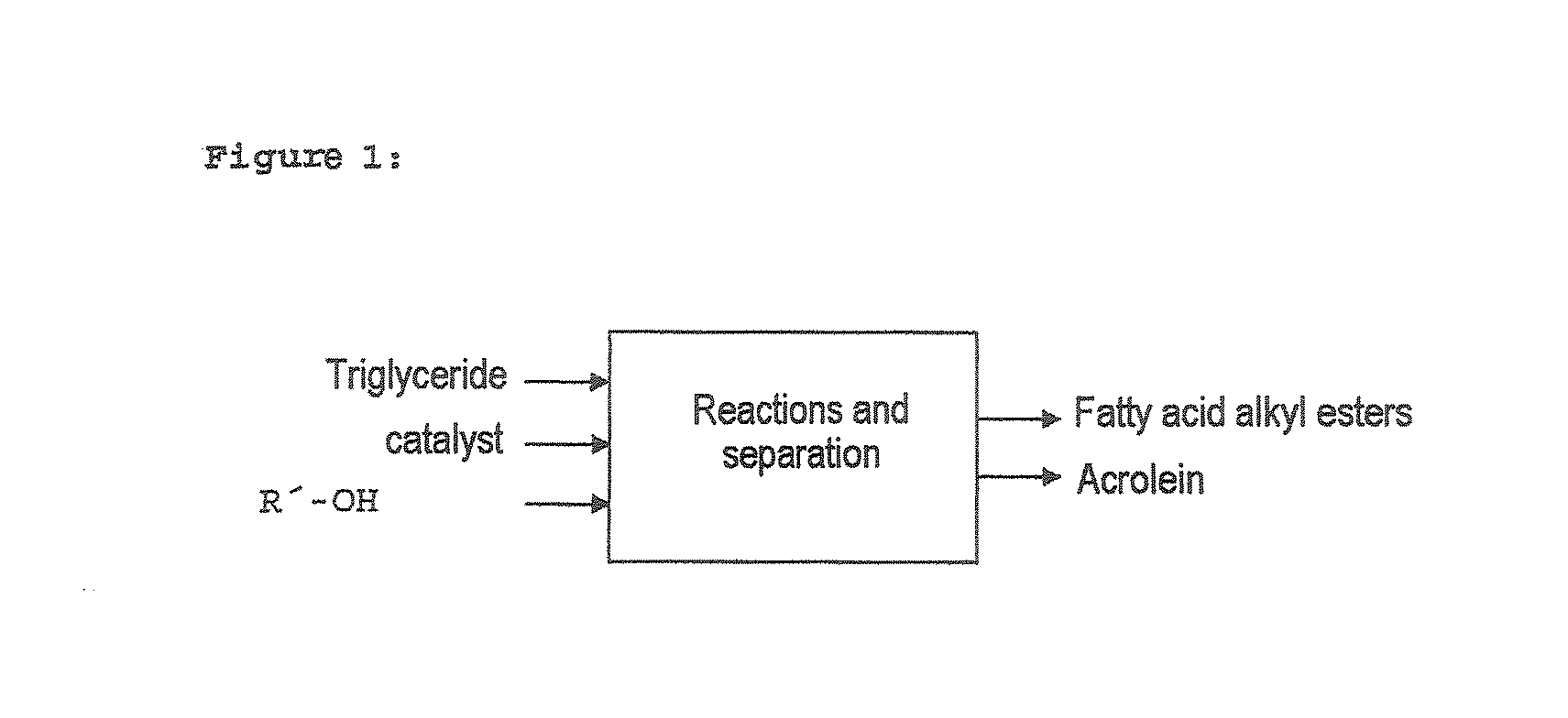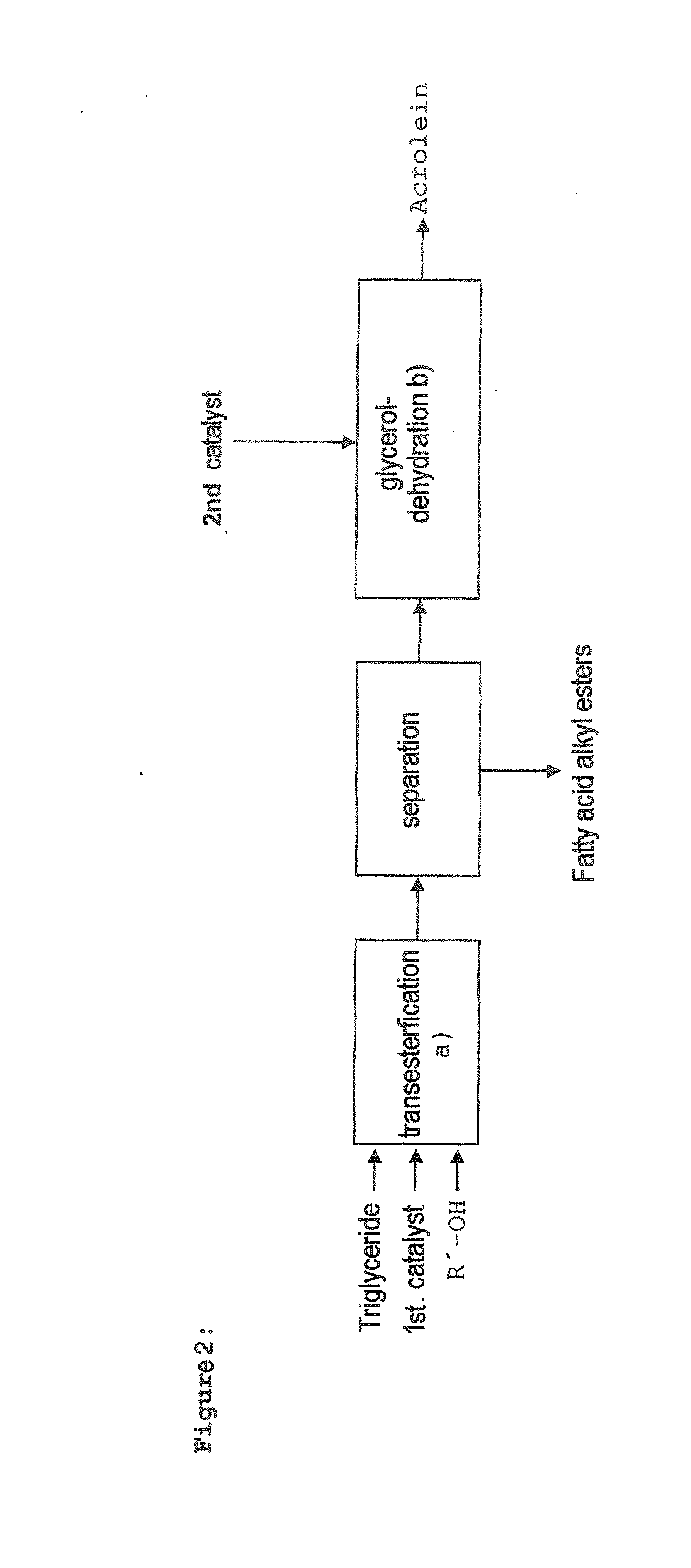Process for preparing fatty acid alkyl esters and acrolein from triglycerides
a technology of fatty acid alkyl ester and acrolein, which is applied in the preparation of carboxylic compounds, fatty acid chemical modifications, carbonyl compounds, etc., can solve the problems of comparatively high apparatus complexity, low value of glycerol obtained after phase separation in biodiesel production, and unsuitable industrial processes. , to avoid the disadvantages of background ar
- Summary
- Abstract
- Description
- Claims
- Application Information
AI Technical Summary
Benefits of technology
Problems solved by technology
Method used
Image
Examples
example 1
[0136]50 g of biodiesel and 50 g of acrolein were mixed and formed a homogeneous mixture. In a separating funnel, this homogeneous mixture was admixed with 250 g of water, shaken and left to stand, in the course of which two phases formed. After the formation of the phase interface, the lower aqueous phase in the separating funnel was removed and analyzed by means of gas chromatography to determine the acrolein content. Overall, 33.4 g of acrolein were obtained in the aqueous phase in this way. Even in the case of simple single-stage extraction with water, it was thus possible to remove a large portion of the acrolein from the biodiesel.
example 2
[0137]The flask of a rotary evaporator was initially charged with a mixture of 50 g of biodiesel and 50 g of acrolein and heated to 35° C. in a water bath. By means of a water-jet pump, the mixture was placed under vacuum slowly. In the cooled distillation receiver, 50 mg of hydroquinone were initially charged to stabilize the acrolein distilled. Within one hour, a distillate of 49.1 g of acrolein was obtained. The purity of the distillate was confirmed to be at least 99.5% by means of gas chromatography. 50.6 g remained in the flask of the rotary evaporator.
PUM
| Property | Measurement | Unit |
|---|---|---|
| pressures | aaaaa | aaaaa |
| temperatures | aaaaa | aaaaa |
| temperature | aaaaa | aaaaa |
Abstract
Description
Claims
Application Information
 Login to View More
Login to View More - R&D
- Intellectual Property
- Life Sciences
- Materials
- Tech Scout
- Unparalleled Data Quality
- Higher Quality Content
- 60% Fewer Hallucinations
Browse by: Latest US Patents, China's latest patents, Technical Efficacy Thesaurus, Application Domain, Technology Topic, Popular Technical Reports.
© 2025 PatSnap. All rights reserved.Legal|Privacy policy|Modern Slavery Act Transparency Statement|Sitemap|About US| Contact US: help@patsnap.com



